Discover New Orleans’ most amazing abandoned buildings
The haunting beauty of the city's urban landscape
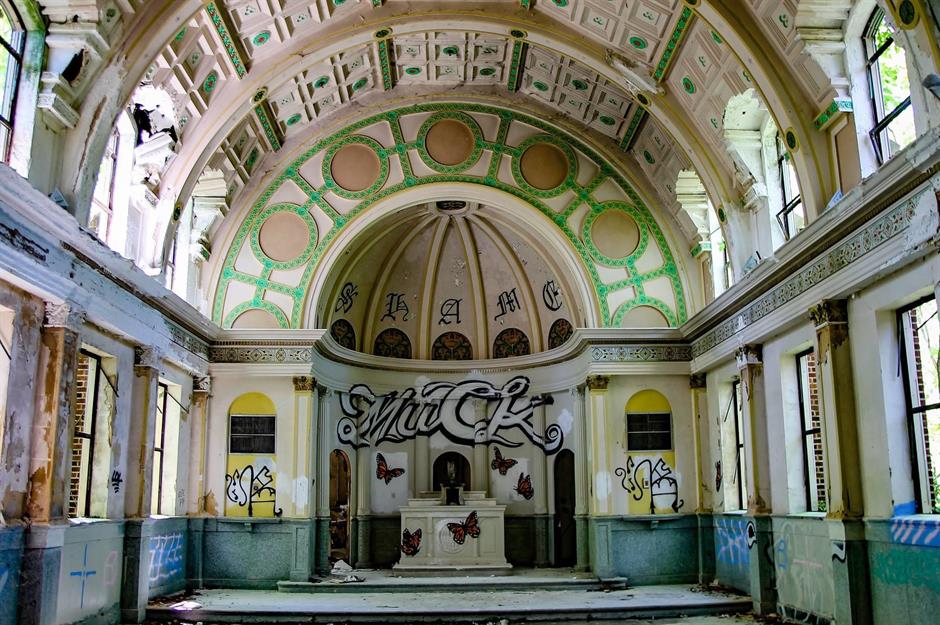
The catastrophic flooding caused by Hurricane Katrina in New Orleans in 2005 destroyed or damaged over 200,000 homes. The city still has many abandoned buildings, many of them important and historic edifices that have been left to decay.
From a hospital where patients and staff were trapped during the storm to a Gothic-inspired almshouse, these structures provide a unique insight into the city’s past.
Click or scroll on to explore seven of the city’s most intriguing crumbling treasures…
Charity Hospital
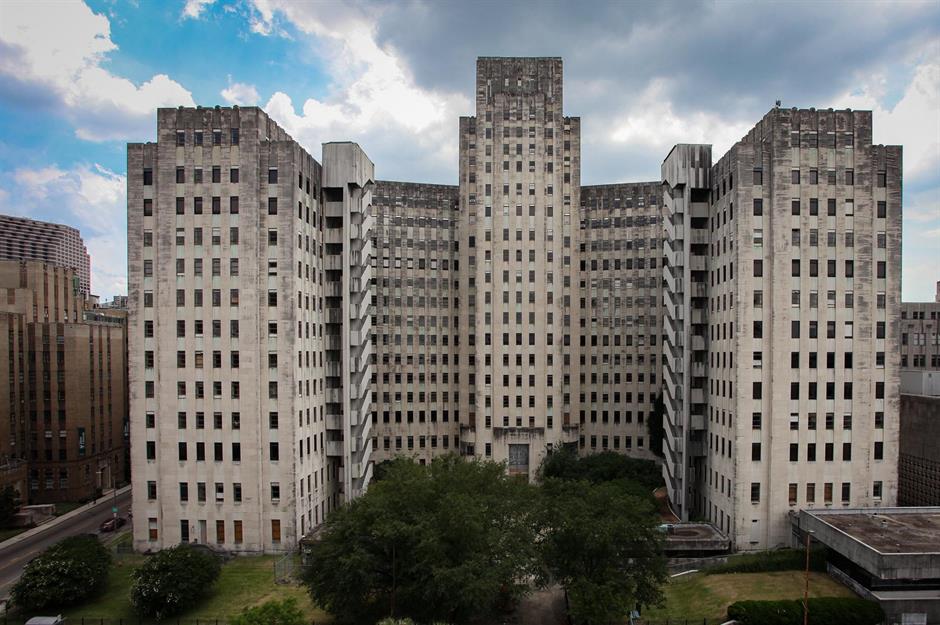
Abandoned since Hurricane Katrina in 2005, Charity Hospital is now a ruin in downtown New Orleans.
Urban explorer Leland Kent of Abandoned Southeast, who has a fascination for derelict buildings across America’s Deep South, photographed the Art Deco icon, and a dozen other forgotten buildings in the city, and offers a glimpse inside its beautiful urban ruins in his book Abandoned New Orleans.
Founded in 1736 by a French shipbuilder who wanted to fund a hospital for the poor, the present structure was commissioned in 1939. It became the country’s second-largest hospital with 2,680 beds and encompassing a million square feet (93k sqm).
Charity Hospital: the devastating storm
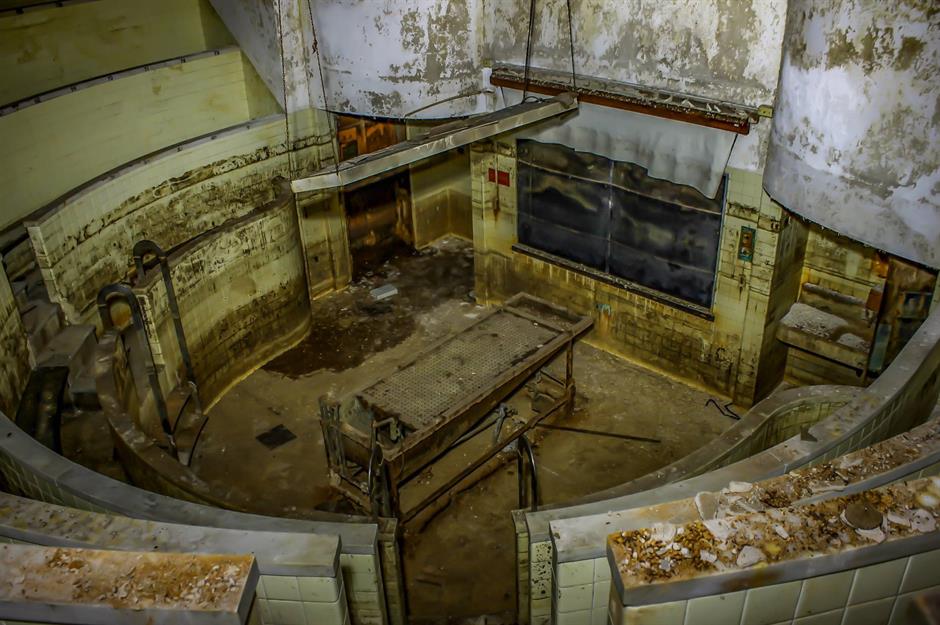
When Hurricane Katrina made landfall on 29 August 2005, rising floodwaters swept through the lower floors of the hospital, cutting off the power supply and trapping everyone inside for days, with no power, air conditioning, or food.
Patients were eventually evacuated, but several lost their lives waiting to be rescued.
The basement morgue and turn-of-the-century autopsy amphitheatre, seen here, were also flooded, and the water line was still evident on the basement walls.
Charity Hospital: safety net for the poor
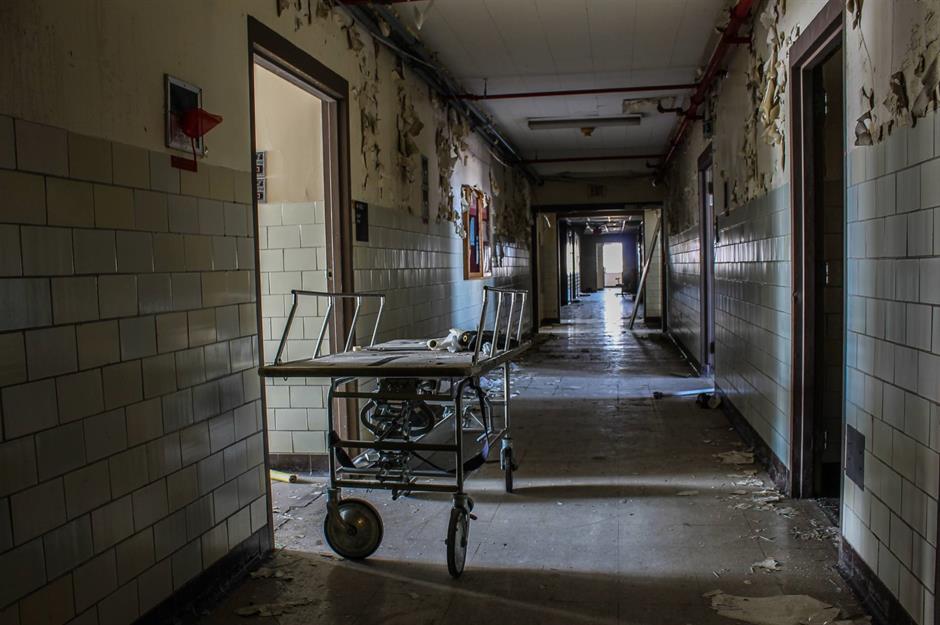
Before its closure, the hospital was celebrated for providing care to the poorest people in the city. Yet, just weeks after the devastation, efforts to reopen the hospital were thwarted by the then-Governor Blanco, who stated that it would never function as a hospital again.
The building lay dormant until 2025, when the City Council confirmed they had allocated funds for its redevelopment. Sadly, these neglected wards and corridors will never function as they once did.
Instead, Charity Hospital will house over 600 researchers and support the Tulane University Innovation Institute.
Holy Cross High School
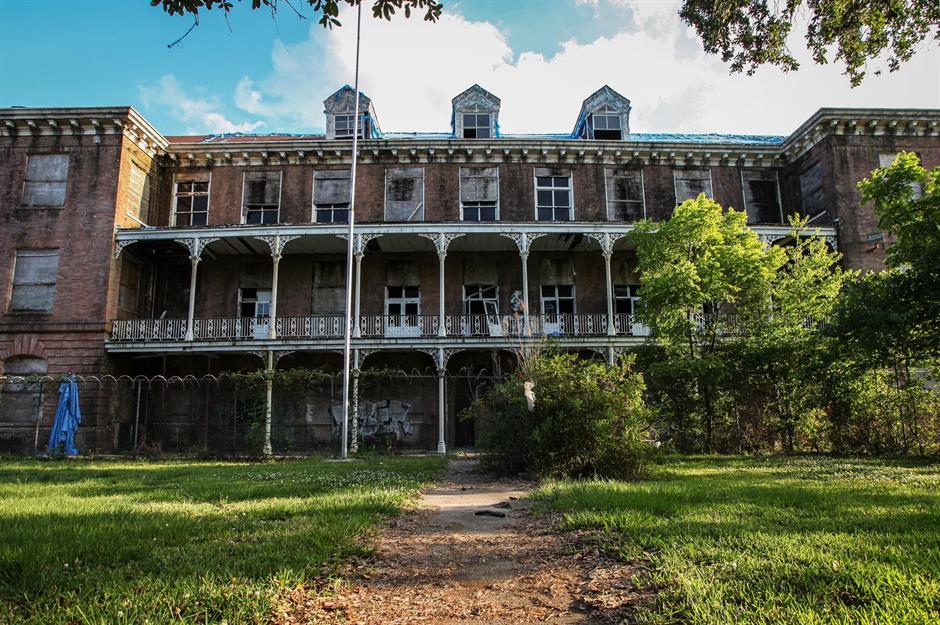
The Holy Cross High School was left to rot following Hurricane Katrina in 2005, which left 80 per cent of the city buried under water.
The derelict red-brick building with its boarded-up windows was originally a riverfront plantation, purchased by the brothers of the Congregation of Holy Cross to house orphans whose parents had died during a series of epidemics.
In 1879, the building was converted into a Catholic boys’ school and renamed Holy Cross High School.
Holy Cross High School: dilapidated interiors
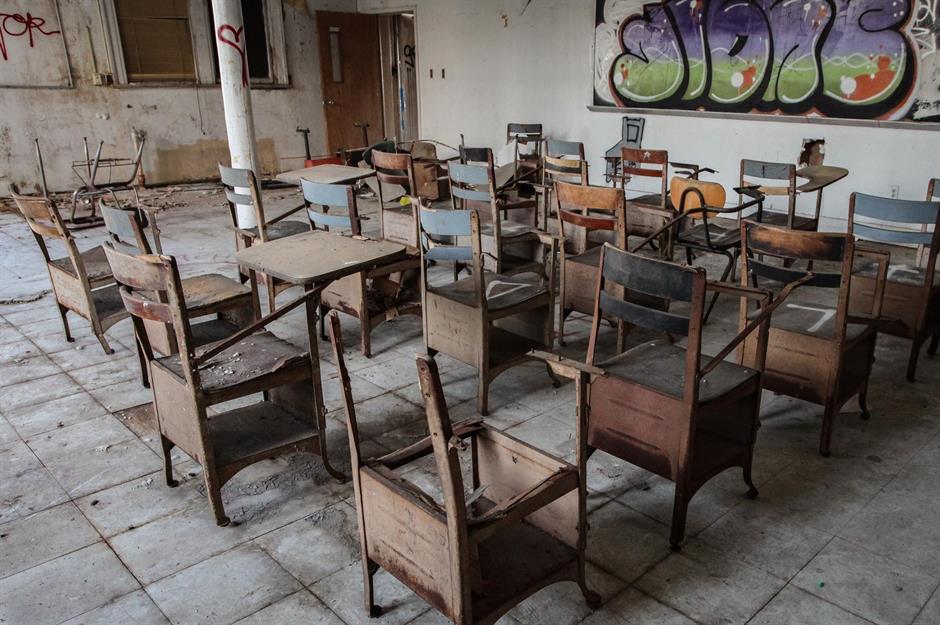
Rows of damaged chairs still sit eerily facing the front, harkening back to the days when generations of noisy schoolboys filled its classrooms. Elsewhere, dilapidated interiors show empty lockers still stuffed with books, and corridors strewn with debris and broken fixtures.
No longer fit for purpose, a new campus was built in Gentilly in 2007, while the original building fell into further disrepair.
The blighted campus was purchased in 2012, but plans for two 13-storey towers were opposed, and the building was named one of the most endangered sites in New Orleans in 2018 by the Louisiana Landmarks Society.
Holy Cross High School: delivered from peril
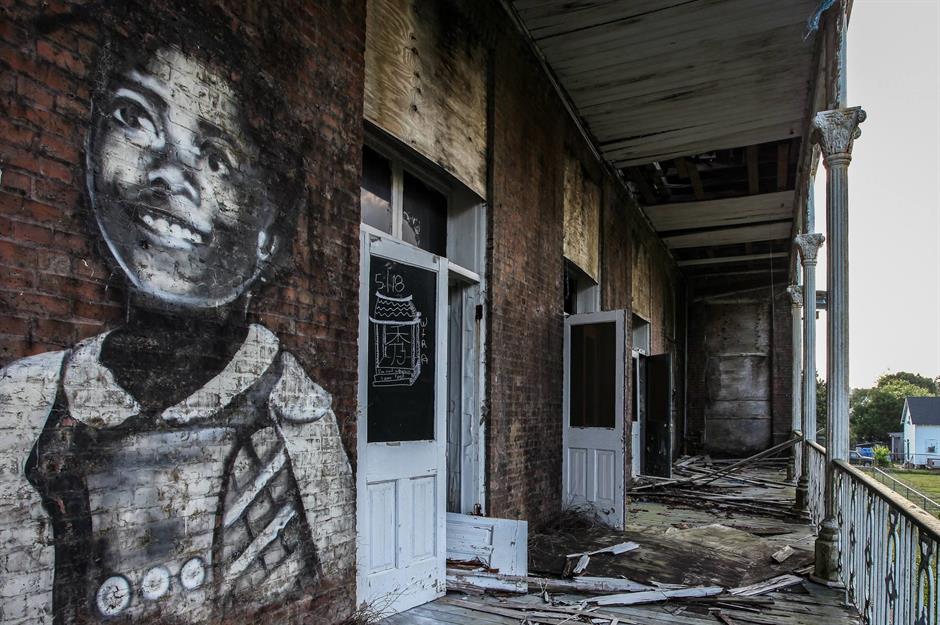
The former college appeared to find its salvation in 2023, when new developers invested $8 million (£6m) to transform the structure into 59 apartment units.
The project was reported to be nearing completion in December 2023, as a team of workers worked meticulously to restore its structure and period features, including this beautiful veranda with its views of the river and downtown.
As of 2025, apartments and studios are available to rent via Historic Holy Cross Apartments' website.
Touro Shakspeare Home
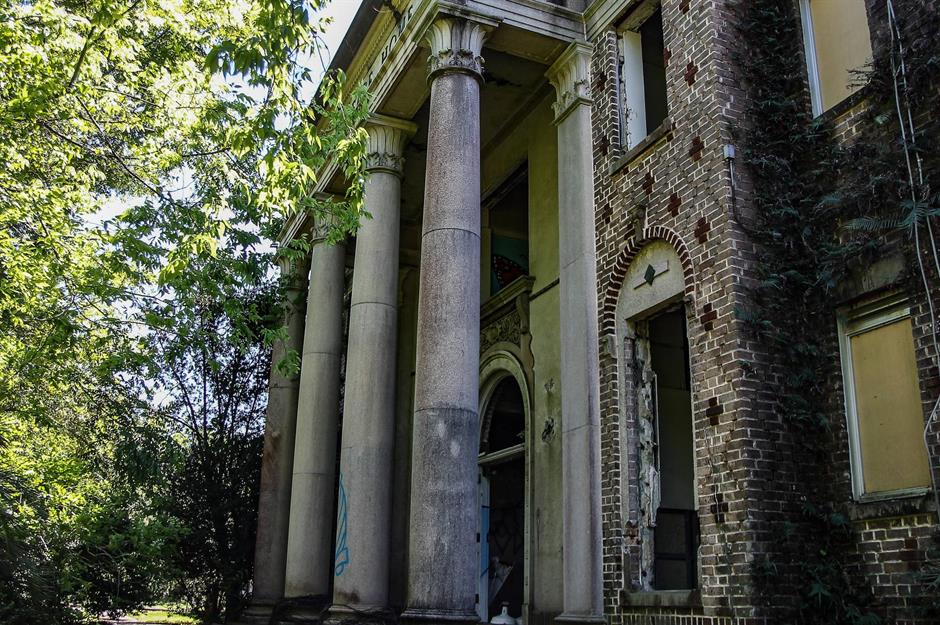
Once a refuge for the poor, the Touro Shakspeare Home now stands abandoned, its grand front portico and four-story columns overtaken by graffiti and climbing vines.
The home was named after two prominent figures: Judah Touro, a local philanthropist whose dying wish was to fund a facility for the homeless and destitute, and Joseph Shakspeare, the mayor of New Orleans in 1895, who helped rebuild the property.
The current Gothic-inspired building, designed by architect William R. Burk in 1933, is the third version of the original 1862 structure. The first building was destroyed during the American Civil War, and the second was marked for demolition by 1937.
Touro Shakspeare Home: reclaimed by nature

The almshouse was big enough to house 200 residents, with men living in one wing and women in the other, each with their own enclosed courtyard.
Now overgrown and covered in moss, the structure combines elements of both the neoclassical Revival and Jacobean Revival styles.
The building served as a city-operated nursing home for over 70 years before it was destroyed by Hurricane Katrina. The property was left abandoned and has deteriorated ever since.
Touro Shakspeare Home: a refuge for the needy

Between the two wings was a nondenominational chapel, featuring a 20-foot (6m) domed ceiling and a kitchen. After years of neglect, the chapel is now covered in graffiti, its pews stolen and its stained-glass windows removed.
However, help is on its way. Initial stabilisation of the building was due to be completed by summer 2025, HRI Properties announced.
It is working with the City of New Orleans to transform the historic building into affordable housing for the elderly. Judah Touro would certainly approve.
Six Flags New Orleans

Once abuzz with the screams of thrill-seekers, Six Flags amusement park near New Orleans lies abandoned, suspended in time.
Originally called Jazzland, the theme park reopened under its new name with much fanfare in 2003, when it was taken over by amusement park giant Six Flags.
The enterprise was beset by disaster, suffering its first tragedy the same year when a woman was struck by a car on the Joker’s Jukebox ride and died. She was fastening her grandson into his seat at the time.
Six Flags New Orleans: say hello to Hollywood
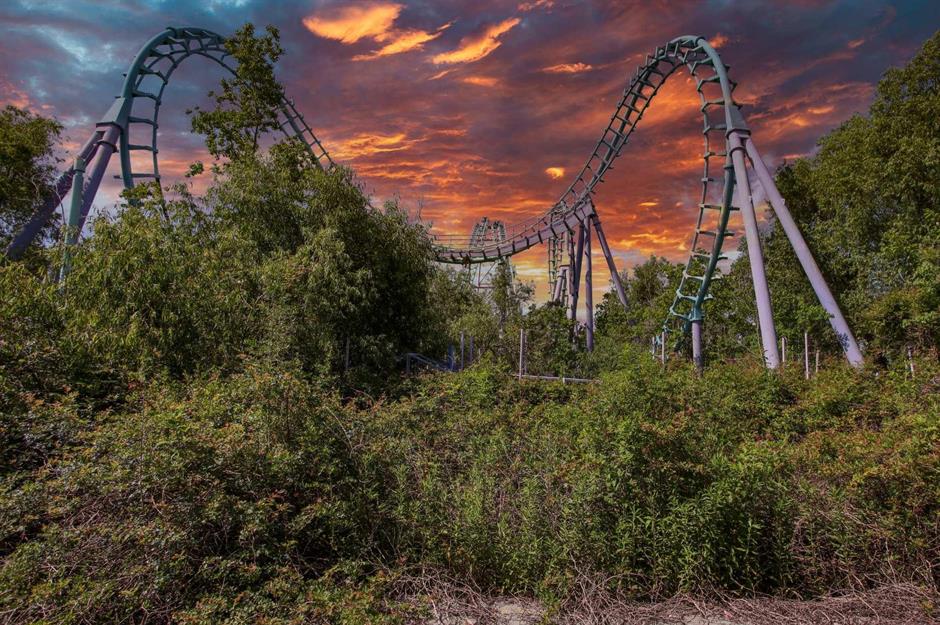
A natural catastrophe struck next, when the park was submerged under six feet of floodwater following the deadly Hurricane Katrina in 2005.
It has been closed ever since, although the park’s stark post-apocalyptic atmosphere attracted the attention of Hollywood by 2011 and several movies were filmed here including Dawn of the Planet of the Apes, Jurassic World and Percy Jackson: Sea of Monsters.
A reported 100 alligators were removed from the site before filming could proceed for Percy Jackson!
Six Flags New Orleans: the future looks bright
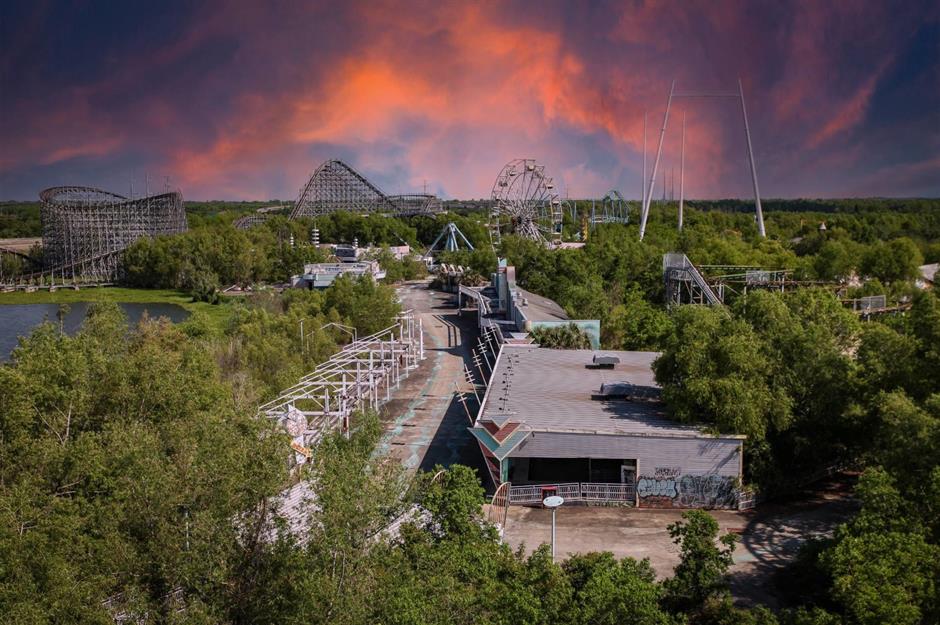
After multiple attempts to revamp the site failed, Six Flags eventually declared bankruptcy, and the city of New Orleans took control of the property.
The good news is that the site’s days of decay may be at an end. The Bayou Phoenix development group took over the site in 2023 with plans to turn the 227-acre (92ha) site into an enormous entertainment complex including hotels, a water park, a youth sports facility, an amphitheatre, retail outlets, a man-made lake and a film studio.
Demolition began in November 2024.
Booker T. Washington High School
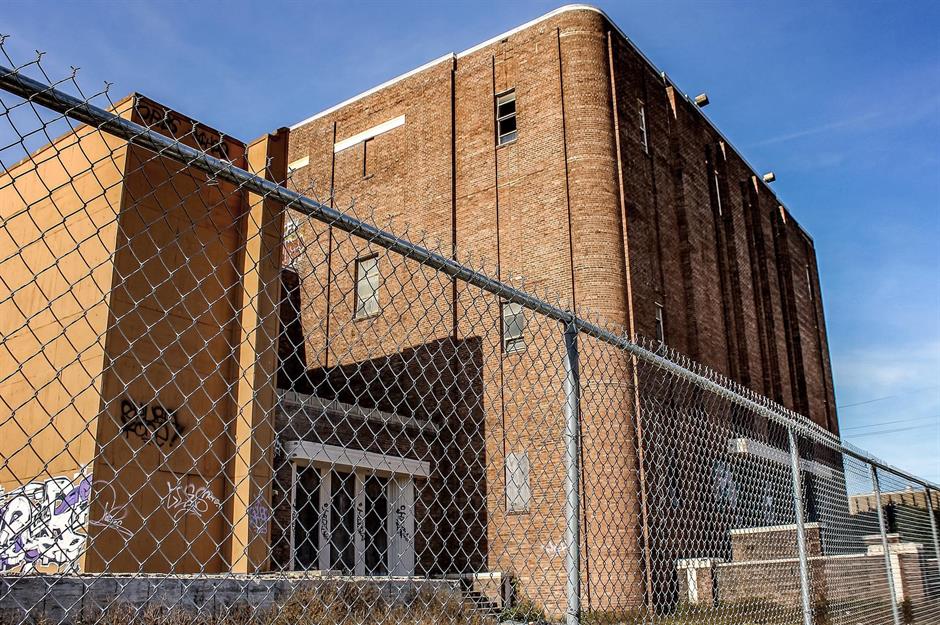
Completed in 1942, Booker T. Washington High School was the first public vocational high school serving African Americans in New Orleans.
Named after the prominent Black educator and activist Booker T. Washington, the institution offered practical training in fields such as printing, motor mechanics and shoe repair, alongside academic studies, during the segregation era in America.
It fell into disrepair in the 1970s and 80s due to falling student numbers and a lack of investment, and by 1991 it was considered a school in crisis.
Booker T. Washington High School: legendary auditorium
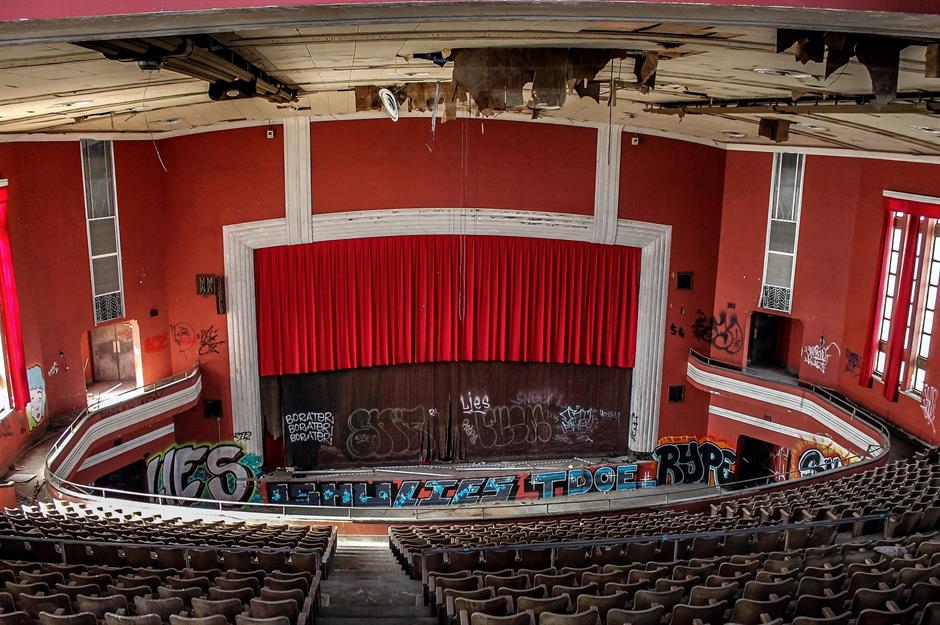
The adjoining, spectacular Art Deco auditorium, which seats 2,000, was severely damaged by Hurricane Katrina, but was once a hub of activity for the city’s African Americans, hosting concerts by legendary Black artists as well as providing a space for unions and civil rights groups.
The auditorium’s first major performer was opera singer Paul Robeson. His performance almost brought the house down due to the thunderous applause and encores.
Other major talents who performed here were Louis Armstrong, Bill 'Bojangles' Robinson, Mahalia Jackson, Dizzy Gillespie and Ray Charles.
Booker T. Washington High School: new beginnings
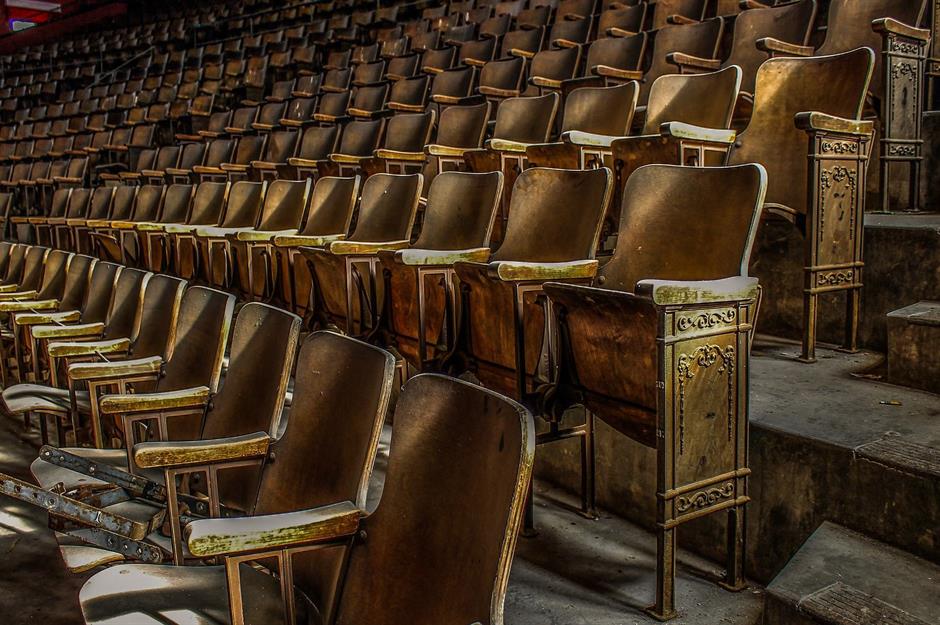
The school finally closed after Hurricane Katrina in 2005, and all its original buildings, except the historic auditorium and the school’s entrance, were demolished.
The discovery that the campus had been built on the site of a closed toxic dump complicated rebuilding plans, but a new school opened on the site in 2020.
The auditorium was faithfully restored and features a sweeping, two-tier balcony covered by a gently curved ceiling punctuated by ornate tiles, which also feature in the entrance hall of the school.
Naval Support Activity (NSA)
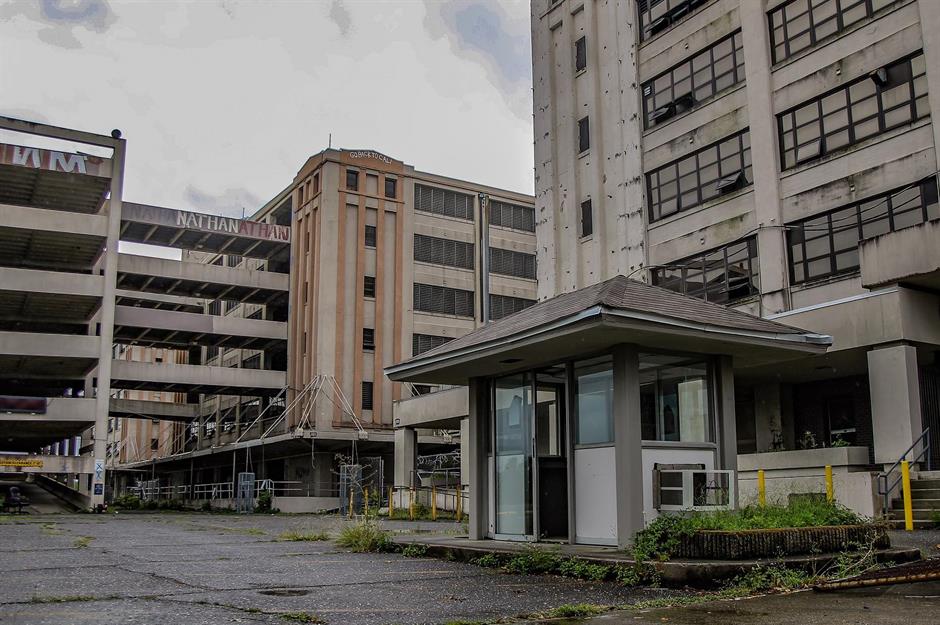
Today an eyesore, overgrown with vegetation and covered in graffiti, the Naval Support Activity (NSA) New Orleans was once an important military hub.
Constructed in 1919, the 1.5 million square-foot (140k sqm) complex, comprising three six-storey buildings, served as a logistics centre during the First World War.
It was repurposed during the Great Depression in the 1930s to provide shelter and training for nearly 25,000 displaced men, who were taken off the streets and given roles in the US Navy. During the Second World War, it reverted to being used by the military.
NSA New Orleans: role in hurricane relief
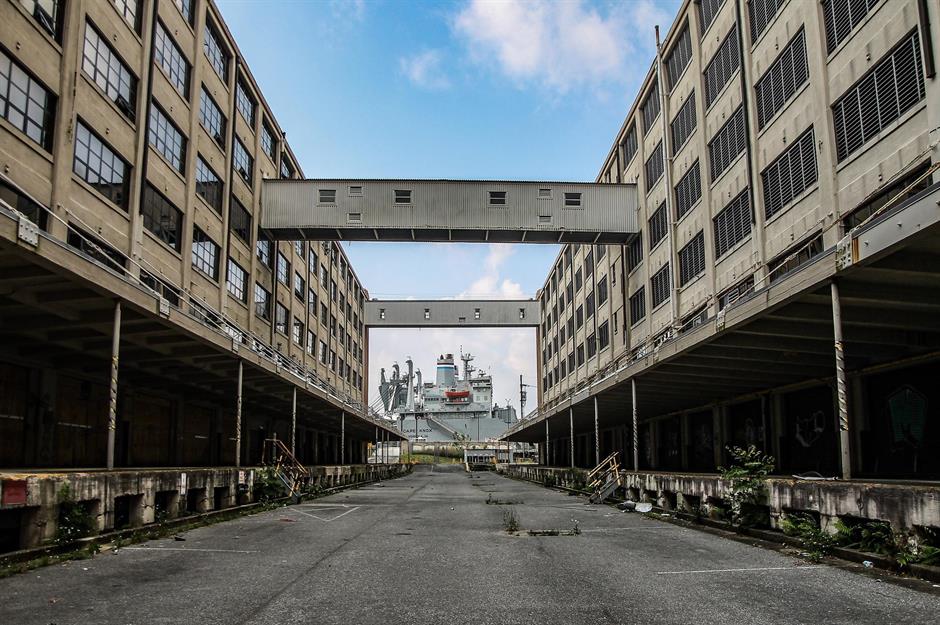
Post-war, the complex became an important naval base, housing the national headquarters for the Navy Reserve and the Marine Corps Reserve.
Renamed the F. Edward Herbert Defense Complex in the early 1970s, it remained operational until the Department of Defense’s 2005 Base Realignment and Closure (BRAC) led to its closure.
It nonetheless provided landing space in the aftermath of Hurricane Katrina for helicopters. Naval ships, including Cape Knox (seen here) docked at NSA New Orleans as they provided critical assistance in the relief operation.
NSA New Orleans: homes for the workers
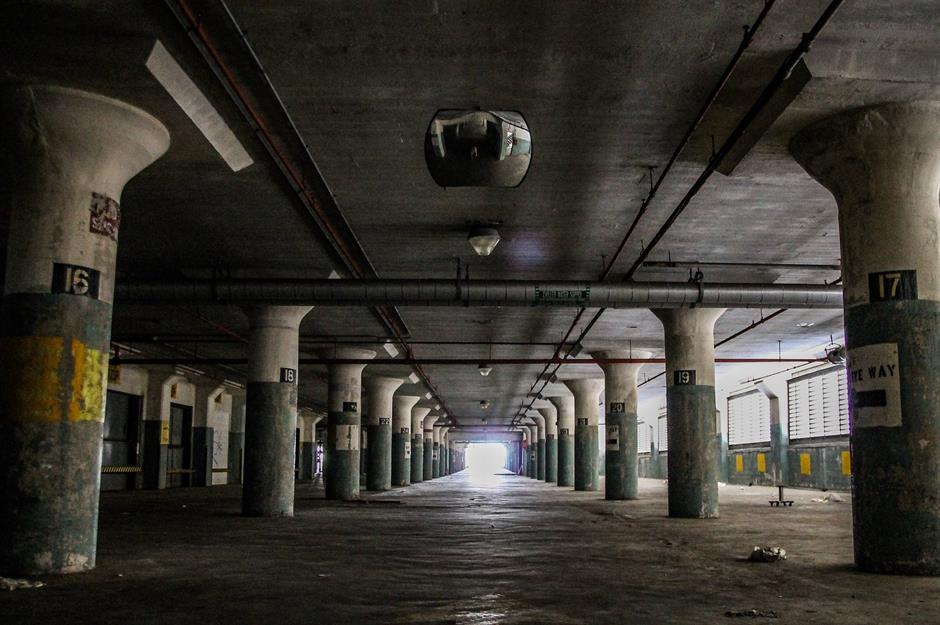
The Navy finally left the site in 2011, leaving it largely abandoned save for a small security team. There have been several proposals for the complex, including turning it into a film and educational complex or accommodation.
Plans gained momentum in 2024 when $20 million (£15m) in federal funding was awarded by the Louisiana Housing Corporation for the site’s revitalisation.
Plans are now in motion to convert the former Navy base into affordable housing, with the first phase including 294 apartments designated for the workforce.
Market Street Power Plant
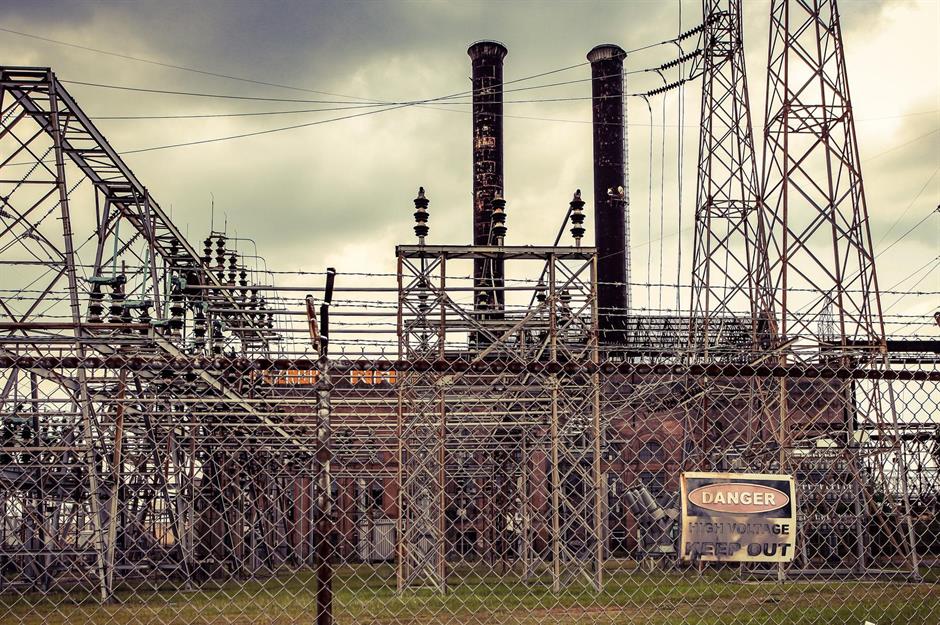
Abandoned for more than half a century, the Market Street Power Plant in New Orleans is a haunting remnant of a bygone era.
Built in 1905 on a prime spot on the banks of the Mississippi River, a local newspaper once claimed it was the largest electrical generating plant in the South, possibly because it expanded over the decades to include seven individual buildings and spread over 160,000 square feet (14,864sqm).
After producing the city’s power for more than 65 years, it closed in 1973, but its towering twin smokestacks, crumbling industrial façade and sheer scale have made it an architectural icon on the city’s urban landscape.
Market Street Power Plant: a movie backdrop
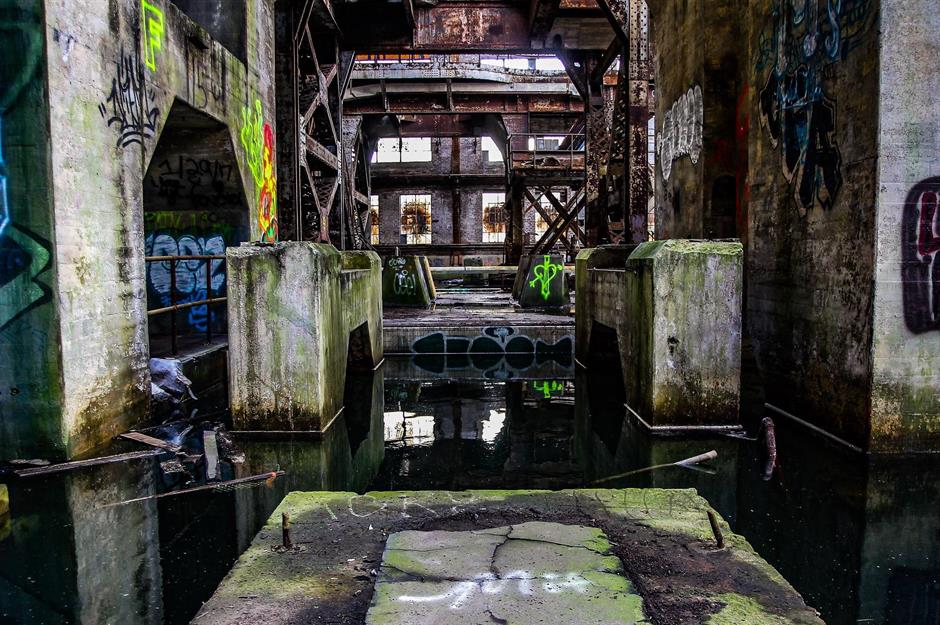
After closing for good in 1984, the plant was left to deteriorate. Vandals, graffiti artists and nature overtook the structure, creating a stark and eerie atmosphere that has made it a popular filming location for movies and television shows.
Several major films including Dawn of the Planet of the Apes and Oblivion have used its cavernous, often flooded, halls to bring a gritty, post-apocalyptic quality to their vision of future dystopian societies.
But Hollywood may have to look elsewhere in the future...
Market Street Power Plant: the future rising
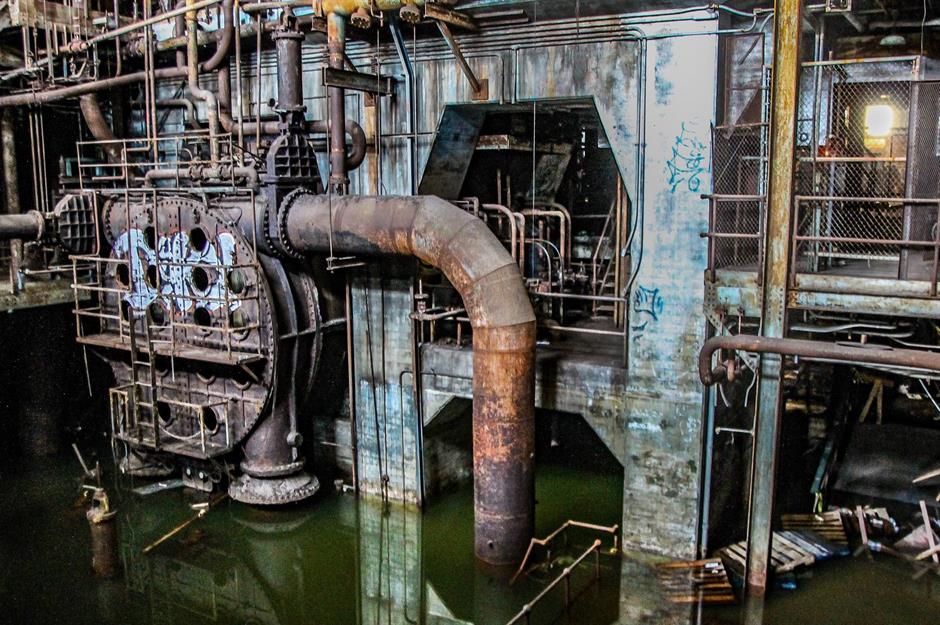
In 2022, a new development team announced a major revitalisation plan as part of the River District Project. The vision includes transforming the plant into a mixed-use complex with hotels, entertainment venues, retail, offices and mixed-income housing.
Work began in 2023, and while preservation of the plant’s historic shell is central, the goal is to integrate the structure into a vibrant modern neighbourhood that can rival the city’s French Quarter or Garden District.
Loved this? Now discover more incredible abandoned homes
Comments
Be the first to comment
Do you want to comment on this article? You need to be signed in for this feature